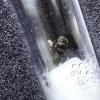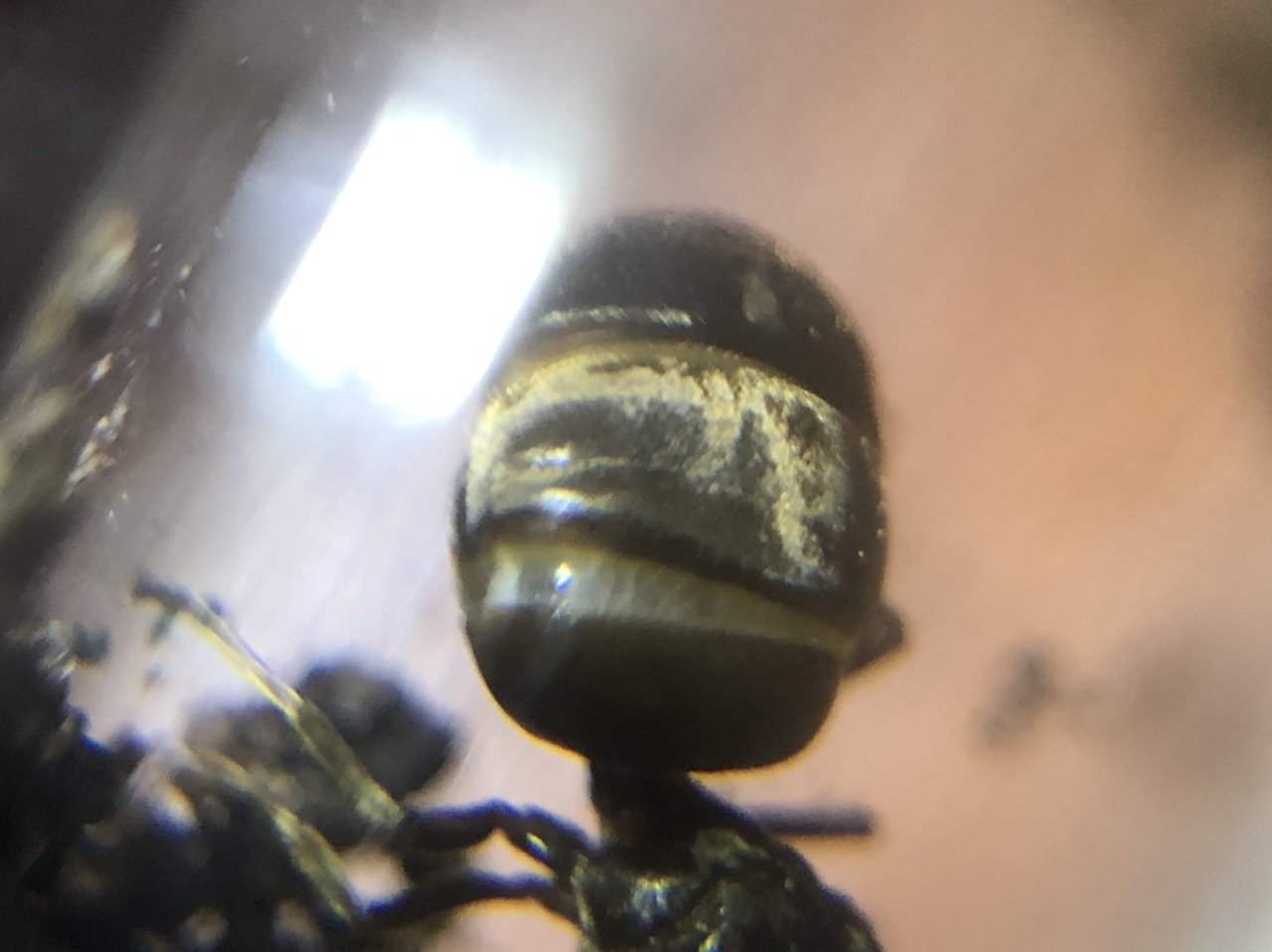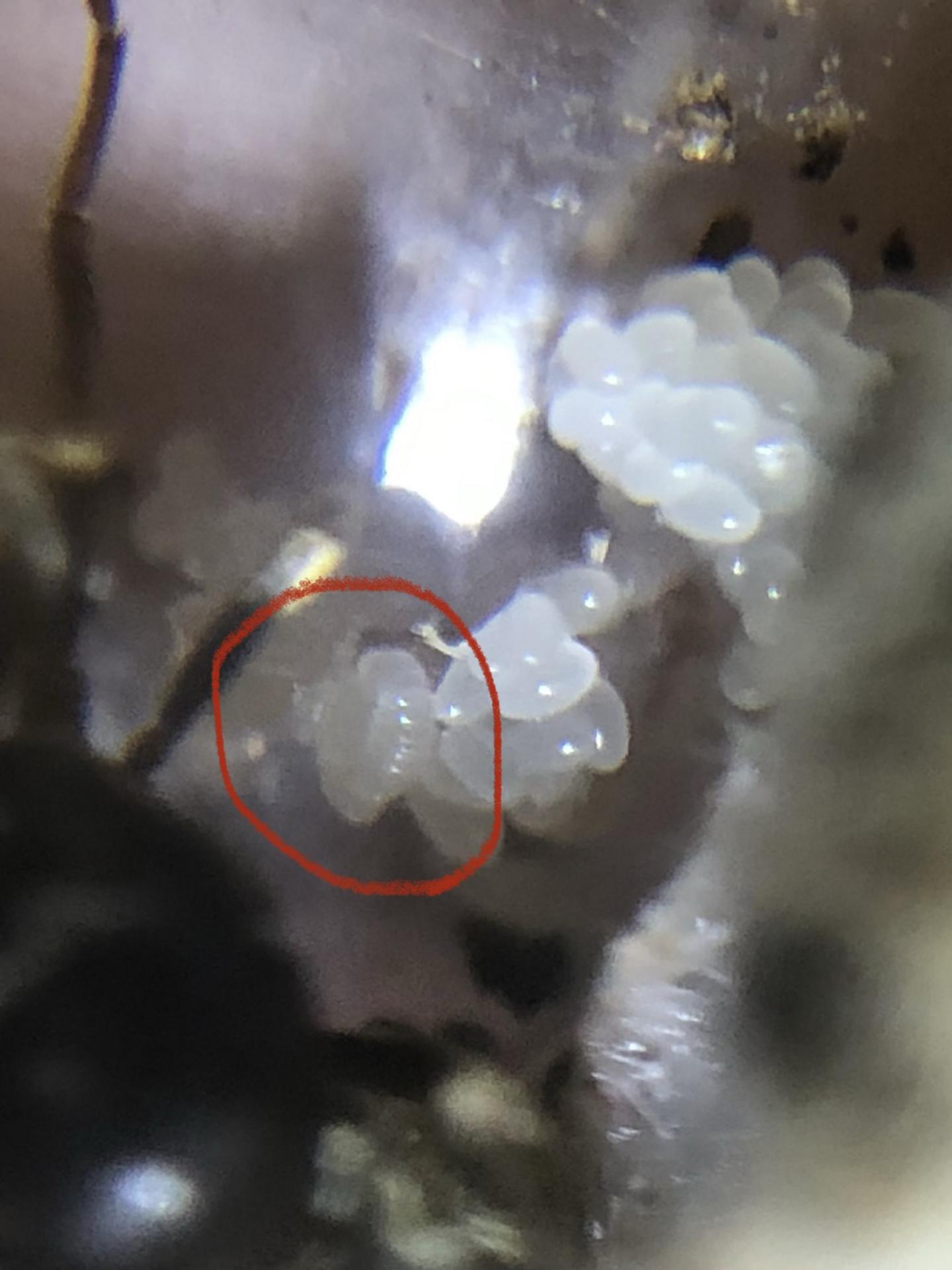- Formiculture.com
- Forums
- Gallery
- Members
- Member Map
- Chat

Lasius Niger Queen questions... again!
Started By
Jimmydave937911
, Jun 3 2020 8:49 AM
6 replies to this topic
#1
 Offline
-
Posted June 3 2020 - 8:49 AM
Offline
-
Posted June 3 2020 - 8:49 AM
Hi all, me again!
2 questions this time! Of the 2 pictures attached, 1 shows the gaster of one of my Lasius Niger queens. Does it look normal to you guys? The second picture I’ve circled part of the brood she has, is this the start of the larvae stage?
Thanks again!
2 questions this time! Of the 2 pictures attached, 1 shows the gaster of one of my Lasius Niger queens. Does it look normal to you guys? The second picture I’ve circled part of the brood she has, is this the start of the larvae stage?
Thanks again!
#2
 Offline
-
Posted June 3 2020 - 8:55 AM
Offline
-
Posted June 3 2020 - 8:55 AM
1. Normal I believe. 2. Yes that is the start of a larval stage.
#3
 Offline
-
Posted June 3 2020 - 8:58 AM
Offline
-
Posted June 3 2020 - 8:58 AM
In the first photo, the queen’s gaster looks slightly physogastric, or bloated with eggs. The second is perfectly normal brood development.
"God made..... all the creatures that move along the ground according to their kinds (including ants). And God saw that it was good. Genesis 1:25 NIV version
Keeping:
Formica cf. pallidefulva, cf. incerta, cf. argentea
Formica cf. aserva, cf. subintegra
Myrmica sp.
Lasius neoniger, brevicornis
#4
 Offline
-
Posted June 3 2020 - 9:15 AM
Offline
-
Posted June 3 2020 - 9:15 AM
Are there workers? If no that would be the only thing not normal, since the queen is at least from last year's nuptial flight (since Lasius niger did not fly yet this year).
#5
 Offline
-
Posted June 3 2020 - 9:25 AM
Offline
-
Posted June 3 2020 - 9:25 AM
Barristan... I dug up 7 queens while gardening, between 3 and 5 weeks ago in different parts of my lawn! They were very shallow so I think they were in their intial chambers from last years nuptial flights. I didn’t spot any workers as to be honest I wasn’t even looking for the queens at the time.
#6
 Offline
-
Posted June 3 2020 - 9:44 AM
Offline
-
Posted June 3 2020 - 9:44 AM
Ah I see. They normally have first workers before hibernation. The queens are doing their second founding now, but it seems like the queens still have enough resevers for that.
#7
 Offline
-
Posted June 3 2020 - 9:54 AM
Offline
-
Posted June 3 2020 - 9:54 AM
To be honest I’ve fed them both honey and mealworm in the last 4 weeks so they should be good as far as nutrition is concerned...
- Barristan likes this
1 user(s) are reading this topic
0 members, 1 guests, 0 anonymous users


















